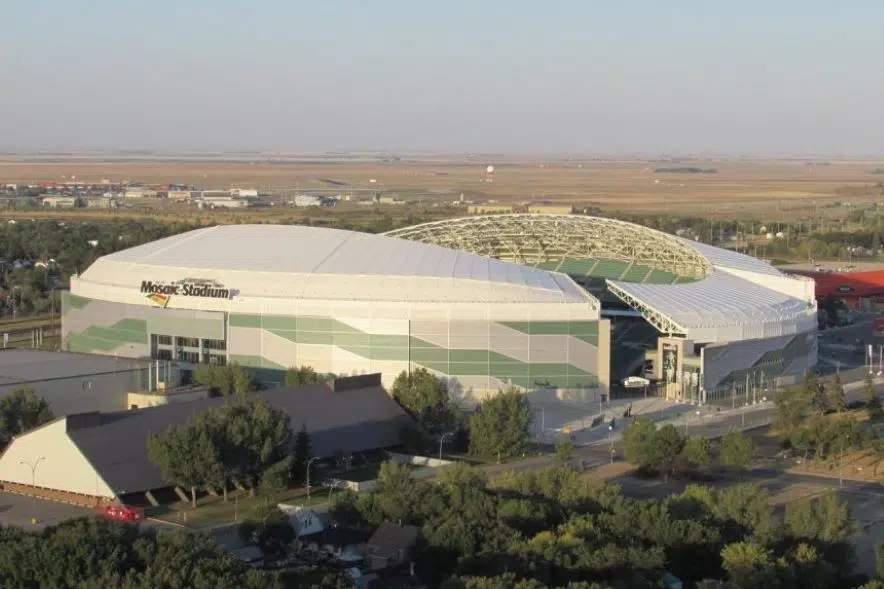Smoke loomed over downtown Regina on Friday morning, hours before the Saskatchewan Roughriders and Edmonton Elks are to meet at Mosaic Stadium.
The Air Quality Health Index (AQHI) in the Queen City reached a 9 early Friday morning. The CFL and CFL Players’ Association recently announced that games won’t be played or will be delayed if the AQHI at the scheduled kickoff is a 7 or above.
The Elks-Roughriders game is slated to start at 7:30 p.m.
By 10 a.m., the index in Regina had fallen to a 6.
Terri Lang, a meteorologist with Environment and Climate Change Canada (ECCC), said the smoke was forecasted to thin out somewhat throughout the day, so the air quality should continue to improve.
“That AQHI value that you see is a three-hour running mean, so it’ll be slower to respond when the air quality goes down and it’ll be slower to respond when the air quality improves,” she said.
The entire northwestern portion of the province, with a slight protrusion toward but not including Saskatoon, was under special air quality statements on Friday morning.
Even though the AQHI was at a 9 Friday morning, no special air quality statements were issued for Regina.
According to Lang, ECCC has access to multiple stations in and around Regina and only one of them reported an extremely high value.
“The thought was that the station itself is reporting a little too high. It’s right in downtown Regina, so there might be other factors going into it as well,” she said. “Because the other stations are all in the low category, that’s sort of the reasoning why.”
The downtown Regina sensor is run by the province, not the weather office, Lang confirmed.
“The forecasters will take into account all of the other sensors we have access to and see what they’re recording. If they’re all trending up into the high category, then a statement will be issued,” she said.
As for whether anyone should be worried about attending Friday’s Roughriders game, Lang said people with underlying health conditions that aggravate their breathing might consider sitting it out.
Lang described the smoke as being in a band running north to south and the models see it stretching out.
“Imagine stretching a rubber band and so it’ll thin itself out that way, so some of it’s moving to the south and some of it’s moving to the north,” she said. “Smoke forecasting is so difficult. The models struggle with it (and) the forecasters struggle with it just because there’s so many factors that go into smoke forecasting.”
More information can be found on the ECCC alerts page.











